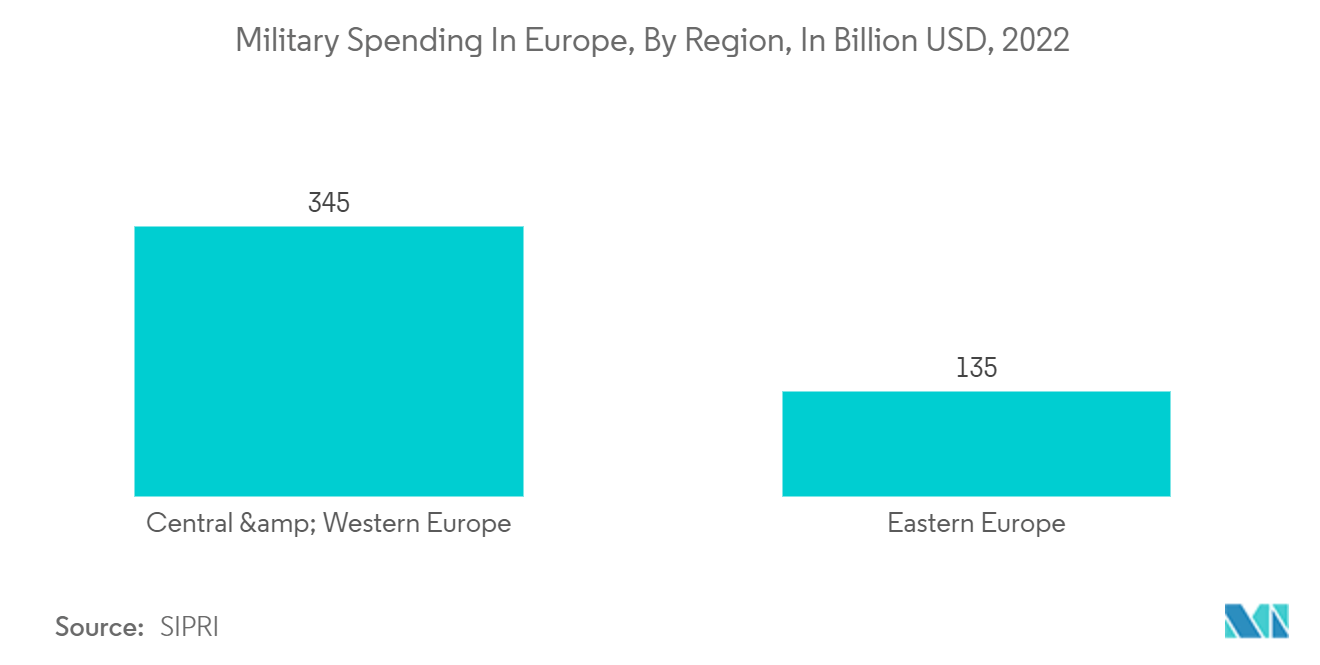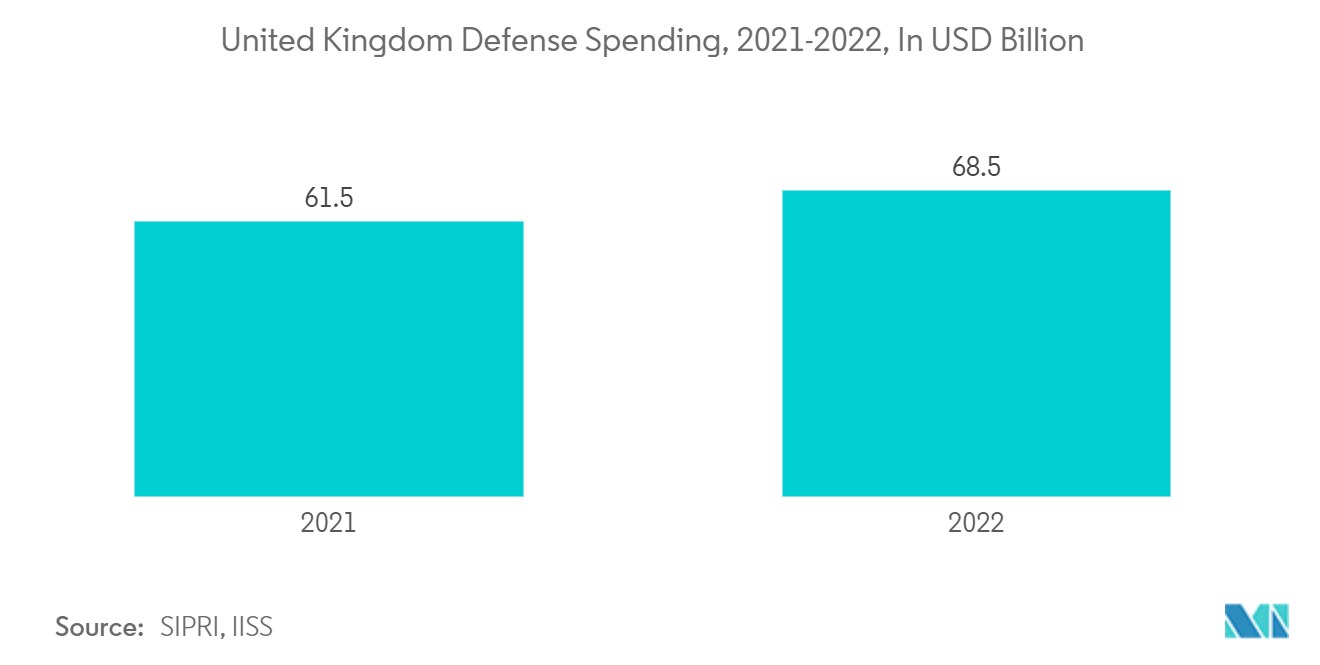Market Trends of Europe Semiconductor Device In Aerospace & Defense Industry
Sensors Segment to Grow Significantly
- Wireless sensors are a crucial component becoming increasingly important in the defense and aerospace industry. Wireless sensors are a critical semiconductor technology product. When developing military vehicles, their influence on the aircraft's structural integrity, diagnostic optimization, and ongoing health checks continues to be vital.
- Sensors aid in better aircraft control through sophisticated modeling techniques, resulting in lightweight design for more excellent weight performance. These sensors help deliver accurate information on different aspects to increase the vehicle's efficacy and efficiency. 'Smart Skin Technology' has also recently been used in the aerospace sector.
- The revolutionary system equips the exterior of the aircraft body with over 10,000 microsensors, allowing the pilot to keep an eye on the vehicle's condition. It assists in measuring wind speed, temperature, and physical strain movement, enhancing the aircraft's lifespan significantly.
- Military aircraft are built with long-lasting materials that can resist a variety of tasks far beyond the requirements of a commercial trip. This implies that increased g-forces, vibration levels, and dynamic operating maneuvers put an airplane under much stress. However, fixed and rotary-wing aircraft employ aerospace pressure sensors to monitor pressure.
- The Government of European countries is spending heavily on aircraft upgradation and modernization, where sensors will be utilized in a broader way, which will help provide accurate data regarding the temperature and pressure of the cabin, controlling the wings and flaps, and others. For instance, according to SIPRI, in 2022, the government invested USD 345 billion and USD 135 billion in central & western, and eastern Europe, respectively, which will help to create ample opportunities for growing in the studied market.
- Furthermore, to develop highly advanced electronic components for next-generation infrared (IR) sensors and to bolster the supply chain of these cutting-edge goods in Europe, Lynred, a leading global supplier of high-quality infrared detectors for aerospace and defense, has launched HEROIC. This is a consortium of ten European partners led by Lynred, a four-year project with an estimated budget of EUR 19 million (USD 19.8 million), of which the European Defense Fund will contribute EUR 18 million (USD 18.8 million).

The United Kingdom to witness the significant growth
- The aerospace industry is potentially at a turning point. The United Kingdom's current design, development, and manufacturing skills are threatened by growing market globalization, rising development costs, and the need for plans for new manned fast jet aircraft designs. This will necessitate a significant change in culture and functioning methods, substantially transforming businesses and the government.
- The United Kingdom considers how human-crewed and uncrewed aerial vehicles should coexist as crucial to future combat air capabilities. Due to this, future purchases of unmanned and manned platforms are anticipated, even though there is no need for a new-design human-crewed aircraft beyond what is already planned.
- However, given that human-crewed aircraft are expected to have a service life of at least 30 years, there is a constant need to sustain and modernize both present and future fleets. Moreover, it will be vital to maintain several onshore capabilities to maintain the UK's capacity to undertake operations without becoming overly dependent on other countries.
- According to SIPRI, in 2022, the United Kingdom spent USD 68.5 billion on the military, equivalent to 2.2% of the UK's GDP. This expenditure was 3.7% higher than in 2021; compared to 2013, the increase was 9.7%. This growing government investment in the defense industry will fulfill the required demand.
- The major market players also collaborate and develop innovative products to maintain their market share. For instance, in September 2022, As a part of the United Kingdom's Weapons Sector Research Framework (WSRF), Collins Aerospace was given a multimillion-pound program to create a navigation-grade Inertial Measurement Unit (IMU) for use in upcoming sophisticated weapon platforms. Collins will work with the United Kingdom's Ministry of Defense (MOD) to enhance its projects by utilizing its sector-leading knowledge to create a tactical grade or "Class A" IMU using Micro-Electro-Mechanical Systems (MEMS) technology.

